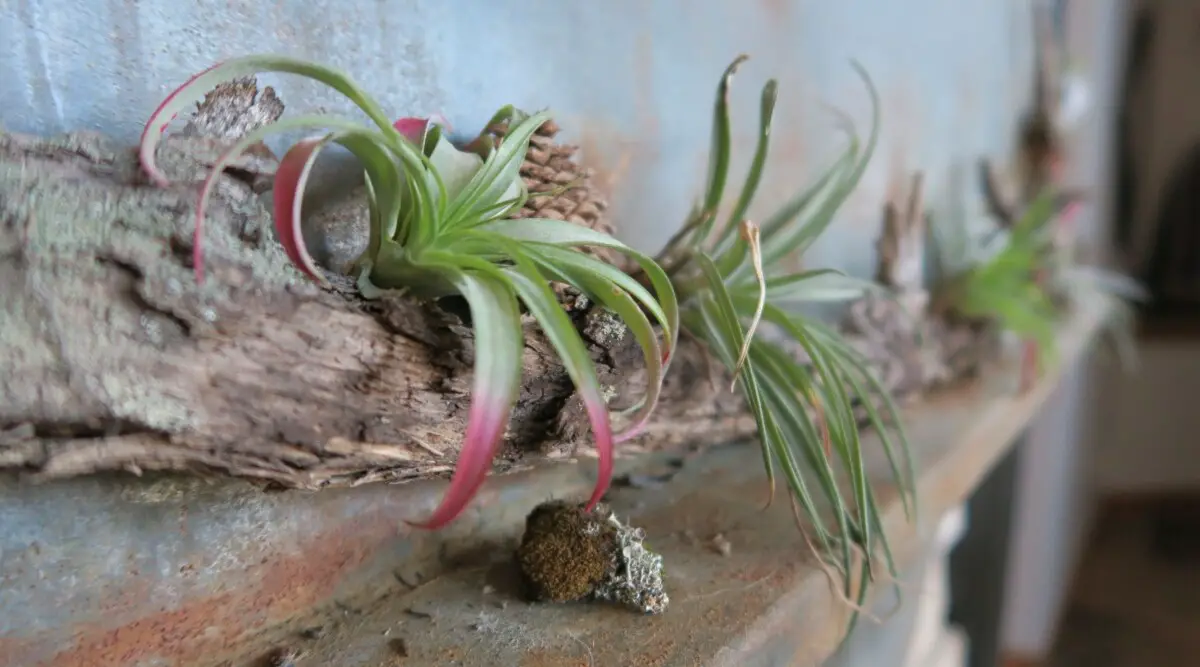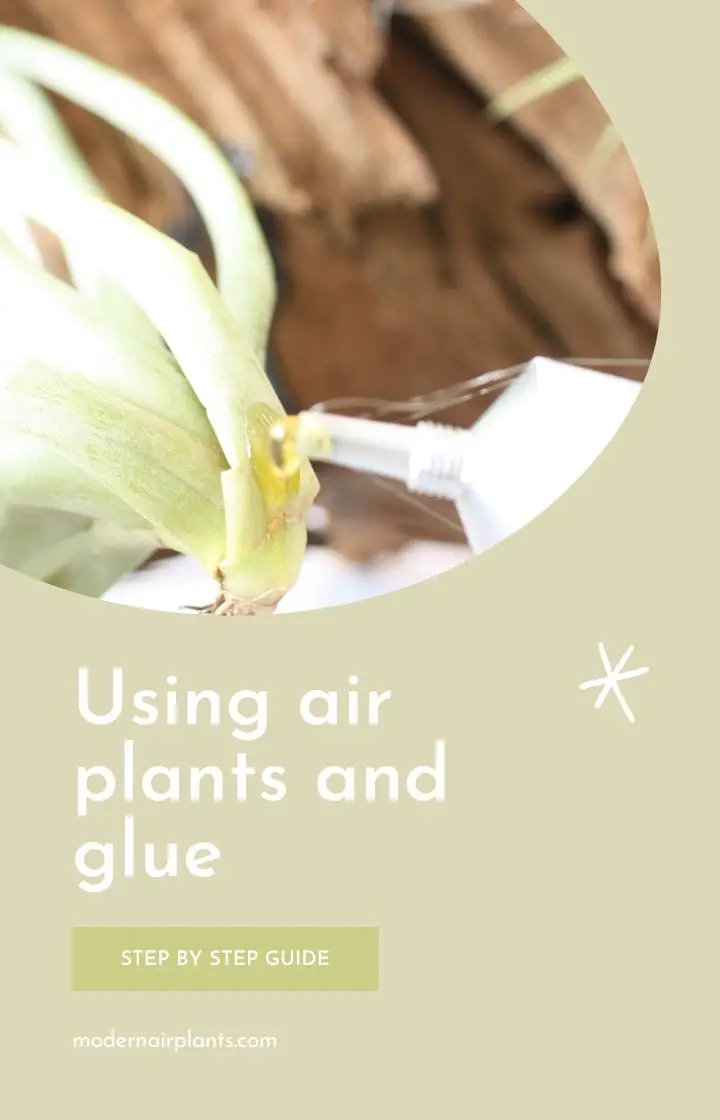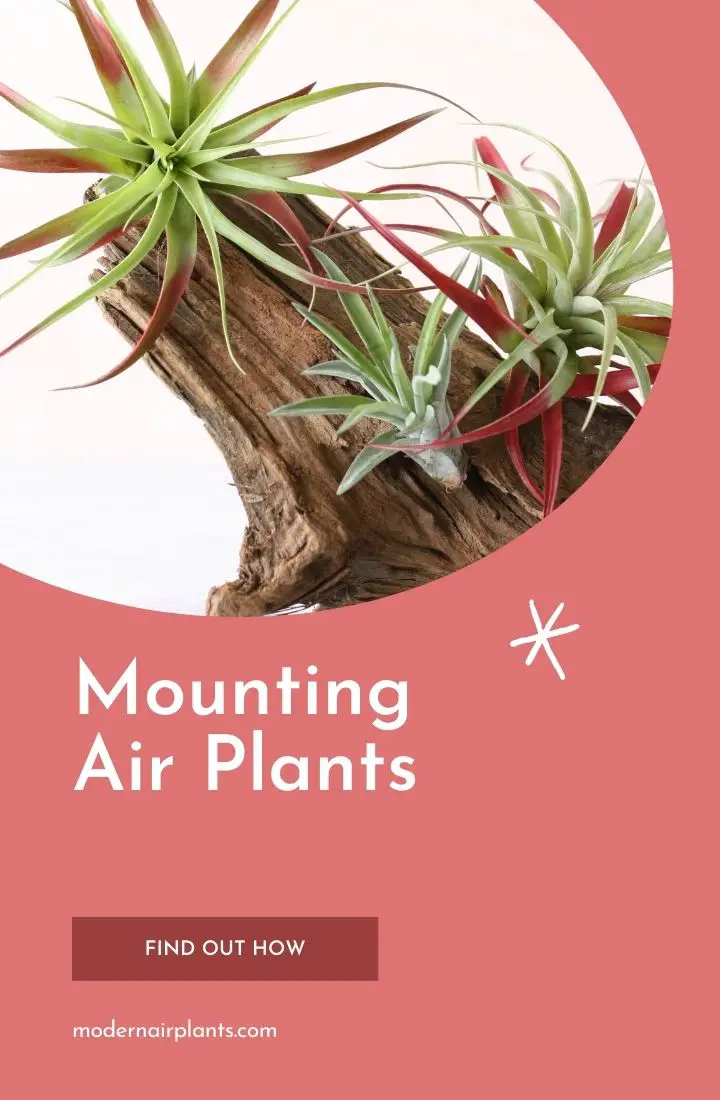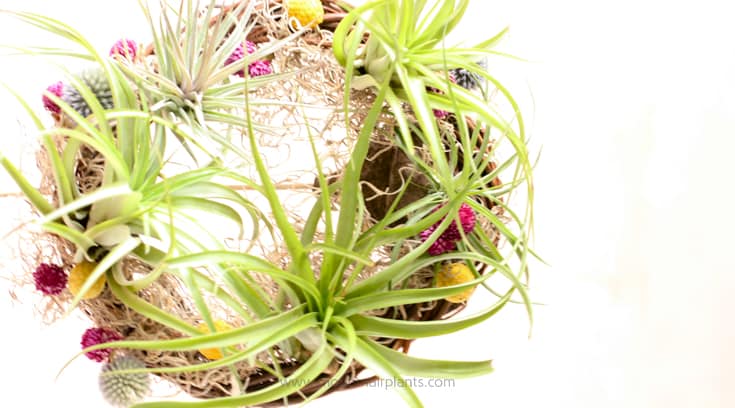
Can You Use Glue for Your Air Plant (Tillandsia)?
Air plants are some of the easiest and most unique plants to care for because they don’t need soil. In other words, there’s not much to worry about when you are growing tillandsias. However, air plants still have their own share of growing requirements to ensure that they are healthy, including proper mounting methods.
This post may contain affiliate links, and I love all the products I promote.
To mount your air plants properly, using glue is not always the ideal choice. However, you can still use plant-safe and waterproof glue for this. Besides proper mounting techniques, you can keep your air plants healthy by giving them sufficient water, air circulation, nutrients, and sunlight.
This article will talk about what air plants need in more detail. You will also learn how to mount your air plants properly using glue and other materials to make sure that they grow healthy and happy.

What Do Air Plants Need to Grow Healthy?
Air plants or tillandsia do not have to be planted in a potting medium or soil to grow. They absorb nutrients and moisture through the trichomes found on their leaves instead of through their roots. This characteristic makes them epiphytic. But while they are versatile and easy to care for, you need to meet a few basics to make sure they are healthy and happy. Click here, to see where I like to buy healthy air plants.
Water Baths
Since air plants do not grow in soil, it is quite difficult to tell when they are getting enough water. So watering them can be quite tricky. Some growers recommend spritzing them with water several times a week. However, a lot of air plant experts prefer dunking or soaking the plants in a basin with enough water to submerge them.
You can bathe your air plants once a week. These baths typically last an hour before you take them out of the water. Click here, to learn more about how to water air plants.
Air Dry
After their bath, air plants need to dry out completely. Hold your plants upside down and give them a thorough shake to remove excess water and to keep water from pooling inside the leaves. Let them air-dry by putting them in a bright place for a minimum of four hours.
Remember that air plants do not like to stay damp because this causes their core to rot. When core rotting happens, their leaves will fall off one by one.
When your air plants have totally dried, you can put them back where you usually place them. Click here, to learn more about how to dry air plants.
Good Air Circulation
Air plants need good air circulation. In other words, you need to place your plants in a place where fresh air can freely circulate around them. As such, closed containers or vessels, like closed terrariums, do not provide a suitable environment for these plants because they encourage wet and stagnant conditions.
If you wish to place your air plant in a terrarium, use a container with a wide hole, like a fishbowl. You also need to make sure the plants are fully dry before you put them inside. Click here, to learn more about how to provide air movement for your air plants.
Sufficient Sunlight
Tillandsias prefer bright indirect or filtered light. Direct sunlight works, but only in the morning. Getting too much sun exposure, especially direct sunlight all day long, would burn them and eventually turn them very dry and brown. As such, find a spot that is not dark but does not get too much light either. Click here, to learn more about how to give light to your air plants.
Fertilizer
Air plants also need fertilizer to keep them lush and to encourage them to flower. You can feed them by adding fertilizer to their baths. Do this only once a month. Remember that fertilizers can also burn your plants.
You can use a bromeliad fertilizer mix to feed your air plants. Tillandsias, after all, belongs to the bromeliad family. An orchid fertilizer also works since orchids, and air plants are epiphytic. Click here, to learn more about how to fertilize air plants.
How to Mount Your Plant
Since you don’t need to plant your air plants in soil, you will have to hang them or mount them onto something.
You can hang your air plants down your patio ceiling or from the branches of a tree. To hang them, you can use a wire, a string, or even a fishing line. When using wire, just make sure not to use copper wire since copper is toxic to them.
You can also mount your air plants onto a wreath or a piece of driftwood. To mount them, you can use a wire or a fishing line.
Using a Wire
Using wire to mount your air plants would make it easy for you to remove them when you need to soak them in water and then attach them again. You just loop the wire carefully through the bottom portion of your plant, wrap it around the base a few times, then attach it to your wreath or driftwood.
To hang your air plants using a wire, make a few loops to create a bowl-like form on one end and a hook on the other end. The bowl-like form will hold your plant right side up. Meanwhile, you can use the hook to hang your wire from a screw, rod, or tree branch.
Using a Fishing Line
On the other hand, a fishing line is clear and would be a good idea if you do not want anything too visible. You can just weave it through the plants’ leaves to attach it to your wreath or driftwood and secure it with a knot.
You can also hang a plant from one end of the line and attach the other end to your ceiling, a rod, or a tree branch. Make several of these hanging air plants in various lengths, and you will have a floating arrangement of tillandsias.
Can You Use Glue to Mount Your Air Plants?
Using glue to mount your air plants is not highly recommended, but it can still be done. Glue makes it difficult for you to remove your plants from their mount, and you won’t be able to soak them in water effectively, or maybe you won’t at all. If you use glue and remove your plant, it may cause damage to its base or leaves.
However, there are plant-safe and waterproof glues that you may use if you prefer to glue them on your mount. One example is Oasis Floral Adhesive. Just be extra careful when gluing your air plant to a wreath, driftwood (use freshwater, not saltwater), or whatever mounting surface you are using. Do not get glue on the leaves, and just dab a little amount of it on the plant’s base. Let the glue dry first before moving the mount to make sure that the plant has been securely attached.

Some people use hot glue for the job, too. While hot glue can be used for anchoring your plant, keep in mind that it is not waterproof and, therefore, won’t be as long-lasting as you may hope it would be.
Watering Your Air Plant When Glued
If you used glue to anchor your tillandsias to your driftwood, wreath, or mounting surface, you might want to skip soaking. Instead, spray them with water or dunk them headfirst without submerging the base. Soaking may cause your plants to rot against the mounting surface. Moreover, make sure to shake the water off and wait for the plants to dry out entirely before positioning your plant’s right side up.
However, if you are not using waterproof glue and would rather remove your plants from the mount, you can soak the base and gently wiggle it every now and then. Eventually, the glue will dissolve, and your plant will easily separate from it. You may also use tweezers or a knife to scrape the glue off gently.
For air plants glued in terrariums, spraying is the best method. Insert your spray bottle’s nozzle inside the opening of your terrarium, then mist the plant’s leaves. Another option is to try getting the plant out from the terrarium. You can try steaming the terrarium to soften the glue.
You can also try removing the other plants or decorations and soak the entire terrarium in a basin of water for 20 to 30 minutes to dislodge the air plant from the glue.
Final Thoughts
There are several ways to display and mount your air plants, and you can use different materials. While the glue is not at the top of the most recommended methods, some people still prefer to use it.
You can mount your air plants onto a piece of driftwood or wreath, or you can anchor it inside an open terrarium, using glue as long as it is the plant-safe kind. Waterproof glue also has its advantages. You also need to learn how to water your air plants properly if they are glued.
Sources
- Sunset: These 6 Simple Tricks Will Keep Your Air Plant Alive
- Garden Therapy: How to Keep Air Plants Alive and Healthy
- Air Plant Design Studio: Mounting Air Plants 101
- Plant in Terrarium: How to Water Glued Air Plants


